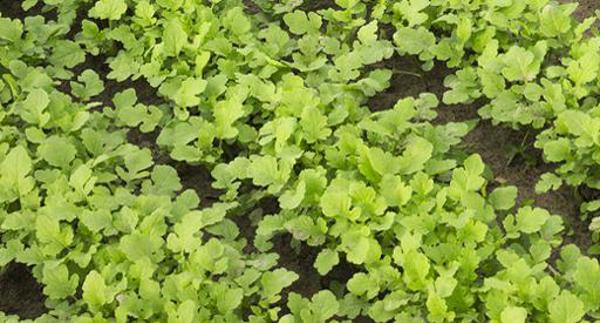
Cover crops are relatively quick to grow and provide an economical solution to replace lost nutrients in the soil in a completely natural way. They are sown in autumn after crops have been harvested and usually in areas that are not going to be used over winter.
Related Products
Cover crops are reliable, sustainable tools used to manage soil fertility, soil quality, water, weeds and soil/plant diseases. They are often referred to as 'green manures' due to the recycling of organic matter and enhancement of microbial activity in soils.
Popular cover crop varieties are mustard seed and lupin seed. The product benefits are similar – they both add organic matter to the soil; lupin crops fix nitrogen in the soil; mustard has a cleansing effect by reducing soil insects, like wireworm that attacks root crops.
Plant a mix of three parts lupin seed with one part mustard seed.
Cover crops also act as a weed suppressant while the land is bare and are a perfect way to improve soil structure.
Plant cover crops in autumn to grow through the winter season and mulch into the soil before the crops start to flower in late winter/early spring. Rain and wind can cause soil nutrients to be leached and lost over time so cover crops are an ideal way to prepare the soil for spring planting as soil nutrients and health is revitalised.
To get the best out of a green cover crop you need to dig it back into the soil when the stems are still green and soft, but before the cover crop reaches approximately 50cm. It is recommended this is done 4-6 weeks prior to planting your vegetable garden.
After the cover crop has been incorporated in to the soil leave it to breath and absorb nutrients before planting your next crop. In addition to mustard seed and lupin seed use other soil conditioners like Tui Super Sheep Pellets and Tui Blood & Bone to condition and revitalise your soil. Adding Gypsum or Tui Lime will help speed up the decomposition process.
Post a comment
Cover Crops Growing Guide Comments
I am going to plant lupin seeds for a cover crop in a small area where the soil is bad. Do you need a special variety for this or would any lupin seed do? I fancy a sea of blue lupins!!
Claire Pearson
Hi Claire, blue lupin are a great cover crop, they fix nitrogen in the soil and once cut down add valuable organic matter to the soil. The secret when growing them as a green crop is to not let them flower but cut them down just as they start to flower. The stalks are very fibrous and become tough, stringy and difficult to dig back into the soil, they will also take longer to break down into the soil. If you want blue flowers, try planting Phacelia, or Purple Tansy, they attract bees to the garden and so help with pollination, as well as keeping weeds at bay if planted enmass.
The Tui Team
I've planted a bed of mustard seed (the lupin seeds didn’t come up at all) they are quite high now, over 50cm. How do you dig them in? Do you pull the plant/root out and then dig in or leave rooted and dig in?
Lydia
Hi Lydia, cut the mustard down to ground level, it is best to do this before the plants flower as the stalks become stringy as the plant matures and takes longer to break down. Dig everything in to a spade or fork depth, including the roots and turn it over. Allow the green plant material to rot down, an application of Dolomite Lime or Garden lime will help speed up the process, it could take up to 6 weeks for the plant material to break down and for the bed to be ready for planting.
Lianne